No mechanical or electronic part can last forever and given the extreme pressure and temperature a diesel fuel injector operates in, it’s a miracle they last as long as they do. The tip of the injector is mounted directly in the combustion chamber which can reach temperatures in excess of 2,000 degrees Fahrenheit, the fuel pressure inside the injector body can reach 30,000 PSI, and on top of all that, they switch on and off hundreds of times per minute. I did some rough math, and by the time they reach 150,000 miles, each individual fuel injector will cycle on and off a little more than 300 million times and pass about 1,200 gallons of fuel through it. Those numbers are astronomical, so it’s understandable that an injector may fail every so often, but depending on the model of truck you own, some are more likely to have issues than others. An LB7 Duramax for example tends to need all the injectors replaced by the time it reaches 100,000 miles, but Cummins powered trucks may have a set of injectors last well beyond 200,000 miles. Regardless of when the failure occurs, when it’s time to replace the injectors, you could be looking at a hefty repair bill. It is worth noting right off the bat, if you have one or two failing injectors, you’re better off to replace the whole set at once. Usually, if one starts to fail the rest won’t be too far behind so you can save a lot of time by doing the whole set at once, but also if another injector fails in the future and goes unnoticed, it could lead to further engine damage because of excess fuel washing down the cylinder walls, diluting the engine oil, or from excessive EGT on one cylinder.
Doing a repair job yourself is a great way to become familiar with the inner workings of your engine, ensure that things are done the right way, and of course save a boat load of cash on labor costs. The professionals will have the job down to a science and will be able to speed through the job and get it knocked out in no time, but if it’s your first time it could take anywhere from a few hours to a few days depending on your skill level and how many Milwaukee Fuel cordless impacts you have at your disposal. Once you have the job complete, you’ll probably realize the work wasn’t all that bad, and the amount of labor cost you saved will make all the bruised knuckles worth it in the end.
However, the million-dollar question is where do you begin? How hard is it to swap out a set of injectors? What else do you need to buy in addition to the injectors? Today we’re going to answer those questions and more as we discuss how to perform an injector replacement for the most popular models of diesel pickup on the road.
12-Valve Cummins
Due to their inline six-cylinder design, any member of the Cummins engine family will be the easiest model of diesel engine you’ll work on, and replacing the injectors is no different. Everything is mounted to the sides of the engine, and there is a lot of room in the engine bay to move around. The 12-valve 5.9 was used from 1989 through the first half of 1998 and though two different injection pumps were used (the VE and P-pump) injector replacement is almost the same between the two, and it couldn’t be simpler. The injectors are located external to the cylinder head on the passenger side above the exhaust manifold, so the very first thing you need to do is remove the high-pressure lines that connect the injection pump to the injectors. There will be a nut on each end of the line, and once its removed from the engine, the fuel return hose can be disconnected, the injector hold-down nut can be removed, and the injector can be pulled from the head. The last bit sounds pretty simple but depending on how long the engine has been in service, the injector may be a bit stuck in the cylinder head. An injector puller tool is available from Tork Teknology for about twenty bucks, but if you’re in a pinch, the lug nuts from your truck happen to have the same thread pitch as the top of the injector and can be used in conjunction with a larger socket or spacer to pull the injector from the head.
24-Valve Cummins
The 1998.5 and later 24 valve Cummins engines are still simple to work on, although the injector replacement job will take a little longer since now the injectors are mounted underneath the valve cover, so there is a little tear down work required to access them. There is not much on top of the engine still, so the first job is unbolting the valve cover. The high-pressure fuel lines must be removed on the driver’s side, and on a 1998.5-2002 engine you can remove them in two groups of three, or on a common rail engine (2003 and later) you can remove the lines between the fuel rail and cylinder head individually. On common rail engines (2003+) there will be a wiring harness under the valve cover that sends the signal from the ECM to the injector which needs to be removed. There is a connector tube that joins the injector inside the head to the fuel line outside of the engine, and once its retaining nut has been removed, the connector tube can be slid out. You may need another special tool from Tork Teknology that threads onto the end of the connector tube to help persuade it from its home. Once the connector tube is out, you can remove the injector hold down clamp and the injector if you have 1998.5 to 2002 Cummins, but if you have a 2003 and newer Cummins, you’ll first have to remove the rocker arms to gain access to the hold down and injector. To remove the injectors from the head, another tool is available from Tork Teknology unseat the stuck injector. When the injectors are out of the cylinder head, make sure the old copper sealing washers have come out as well, because if they are still stuck in the bottom of the head and you install new sealing washers on top, you can have combustion leaks and your injectors will not be fully seated into the head.
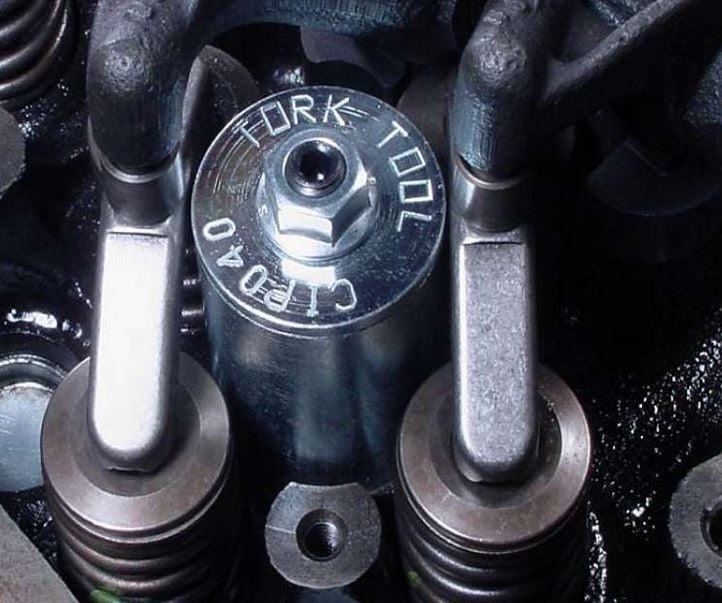
For a Cummins, the suggested replacement parts list includes new injector connector tubes for a 24 valve (1998.5 and later) new copper sealing washers (usually included with the injectors) and a fresh fuel filter once the job is complete. If you want a one-click parts package, Industrial Injection offers an Ultimate Injector Install Kit that comes with everything you could possibly need to get a fresh set of injectors into your Cummins and ensure if lasts for years to come.
Duramax
The Cummins/Ram owners have an advantage when it comes to ease of install on a set of injectors, but the Duramax isn’t much more difficult by comparison. The first generation of Duramax was the LB7 (used from 2001 to 2004) and the injectors are mounted underneath the valve covers. The big challenge on a V8 diesel like the Duramax is there is so much stuff mounted on top of the engine, that most of the repair time is taken up by moving enough parts out of the way to gain access to the valve covers. On the driver’s side of a Duramax engine will be an upper radiator hose, several fuel lines and electrical connectors, a glow plug module, and a charge air cooler tube that all need to be moved. On the passenger side, the obstacles include more wiring, more fuel lines, a fuel filter and mounting bracket, plus the air intake and intercooler tube. Once that’s all out of the way, the high-pressure fuel lines that connect the fuel rail to the injector can be removed, and then the upper valve cover can come off. You’ll now be able to remove the nuts connecting the wiring harness to the injectors, remove the lower valve cover, the low-pressure fuel return line, and finally the injector hold-down clamp. A great tip is to thread an old injector connector tube onto the injector and grip the nut with a pair of vice grips to pull the old injector out of the head. Once removed, ensure the copper washer came out but the injector cup stayed in the head.
For an LB7, you’ll want to replace the injectors (ideally the complete set since they are so prone to failure), the sealing washers on the low pressure return line, and the fuel lines that connect each injector to the rail. The original ones are susceptible to corrosion, and if re-used can send rust and other debris into your brand-new injectors which will ruin them in no time. Merchant Automotive offers an installation kit for the LB7 that includes all the valve cover gaskets and all new seals, and Fleece Performance offers replacement high pressure fuel lines which will get your pickup back on the road with no worries about leaks or future issues.
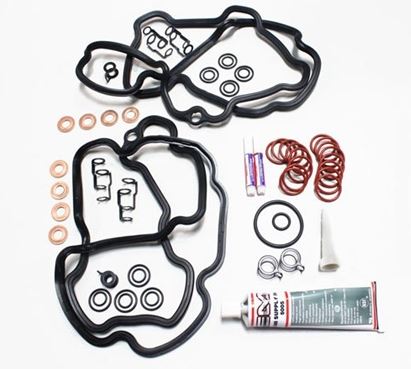
An injector replacement on an LLY through L5P Duramax (2004.5 through present) will all be very similar to one another, with the only major differences being in things like wire harness routing, and a few changes with the intake routing and EGR plumbing that may need to be removed to complete the job. The biggest change from the LB7 is the later model Duramax engines have the injectors mounted externally rather than underneath the valve covers which will save a few steps, and the injector return line is now a hose with removable plastic clip connections at the injector rather than a metal hardline. The trickiest part of an injector job here will be loosening the fuel line nuts on the rail with the EGR Cooler still in place, but a crow’s foot wrench can make life a little simpler.
Because the return line is made from plastic and can easily break during disassembly, it makes sense to buy a new return line kit from Dipaco Dtech before starting the job, and at less than $20 per side, it’s an inexpensive insurance policy against future leaks. If you are replacing a complete set and also want a slight increase in performance from your Duramax, BD Power offers a +60 HP or +90 HP injector set which will work well with a stock or slightly upgraded turbo, or BD also offers a stock replacement set if you are content with your current power level.
HEUI Powerstroke
The 7.3 and 6.0 Powerstroke were used from late1994 through 2007 (with the changeover happening in 2003) and they used a unique form of injection not found in GM or Ram trucks. They’re called Hydraulic Electronic Unit Injectors (or HEUI for short) and they rely on high pressure engine oil to force down a plunger which in turn forces fuel into the combustion chamber. While it is a somewhat complicated design an injector replacement job isn’t a whole lot more complicated than an LB7 Duramax, since everything is also mounted underneath the valve covers. Just like with a Duramax, the V8 configuration of the Powerstroke means a lot of other things need to be moved out of the way to access the valve covers, and the injectors underneath. This includes the turbo intake and discharge tubes, the fuel injector control module (FICM) and mount bracket as well as the coolant de-gas bottle. There will also be a few electrical connectors and coolant hoses that can be moved aside.
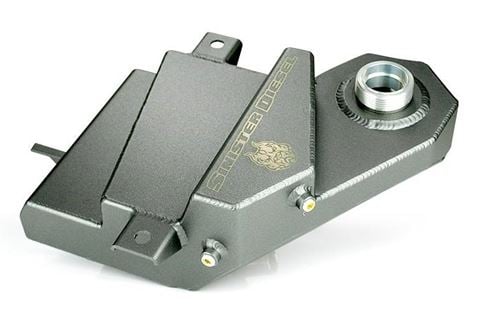
Once you have the valve covers removed you will see the oil rail which feeds high pressure engine oil into each injector. It must be removed from the cylinder head but be cautious because it will be filled with oil and can make a huge mess. The injector harnesses pass through the cylinder head and will need to be carefully un-clipped (another special tool is available to make life simple), and then you can remove the injector hold down bolt and lift the old injector from the head. The “while you’re in there” parts for a HEUI Powerstroke should include the updated Ford standpipe and dummy plug kit for the 6.0 which will help prevent high pressure oil leaks, which could give you a no-start condition. A great replacement injector for a 6.0 Powerstroke is the Casserly/Full Force 155cc injector which will work well on a completely stock truck in addition to a lightly modified one.
Common Rail Powerstroke
All Ford Powerstroke engines made in 2008 and later use common rail fuel injection which means the injector replacement will be fairly straightforward. Of course, Ford Superduty trucks are notoriously difficult to work on with many procedures requiring cab removal, but thankfully replacing a set of injectors is not one of them. Much like a Duramax, there will be several things on top of the engine that are in the way, and on a 6.4 the injectors, fuel rail, and tubes are all mounted underneath the valve cover. Most of the time will be spent removing stuff on top of the driver’s side of the engine. Because the 6.4 uses factory compound turbos, there are a few extra pieces of plumbing that need to be removed, and there are also parts of the fuel cooling system that will have to be set aside, but once you remove the valve cover, you can plainly see the injectors and remove them. The electrical connectors on the 6.4 Powerstroke injector do not have a traditional tab you can push to disconnect, so you must use a special tool which is available from Alliant Power. Once everything is disconnected and the hold down removed, simply remove the injector from the head. A great option for the 6.4 Powerstroke would be the 50-horsepower injector set from Dynomite Diesel. They come with a complete set of injector lines for a leak free installation and will run great on a stock or tuned engine.

The 6.7 Powerstroke was introduced in 2011 and is still used to this day, and thankfully its injectors are mounted on the outside of the engine rather than underneath the valve covers. Due to its “reverse flow” design where the exhaust exits toward the valley of the engine, the fuel rails are mounted toward the bottom of the valve cover, and there is much less stuff in the way which means a 6.7 Powerstroke injector job will be much simpler than most other diesel engines. You can still expect to move a few tubes, wires, and pipes out of the way along with a few bruised knuckles, but overall, the swap will be straightforward. OEM replacements are available from Bosch, or if you’re building a race truck, Dynomite Diesel also offers their “Super Mental” injector that will flow 60% (or more) fuel than stock.
DIY and Save
Most automotive shops charge between $75 to $100 per hour of labor, and as you can imagine, those costs can add up in a hurry. I’m all about saving money wherever possible, so if you’re willing to roll up your sleeves, get a little grease on your hands and tackle the job, you can keep a nice stack of cash in your pocket, or spend that cash on some other upgrades for your diesel. Just remember to take your time, pay attention to the order parts were removed in, and you’ll be back on the road in no time.

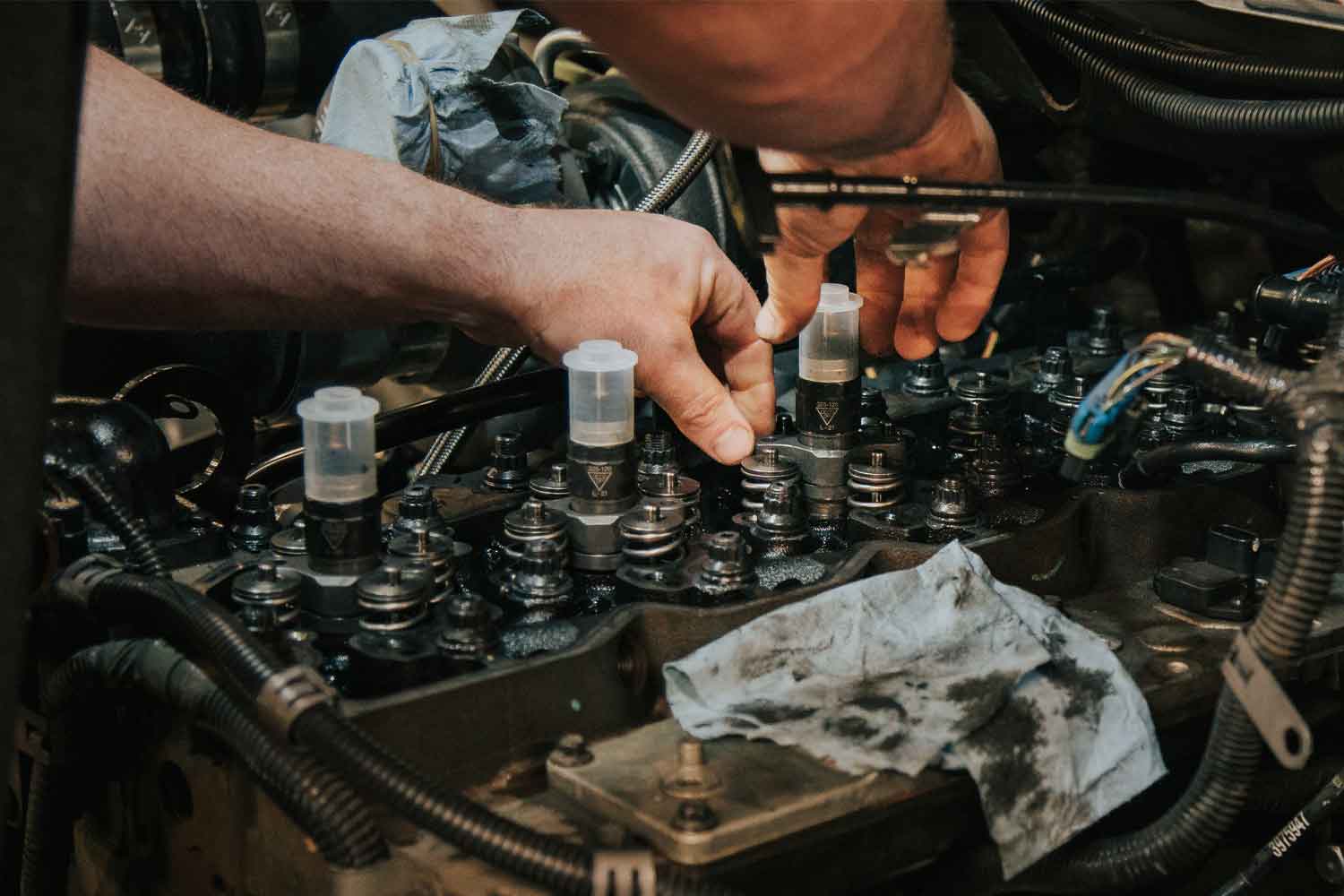
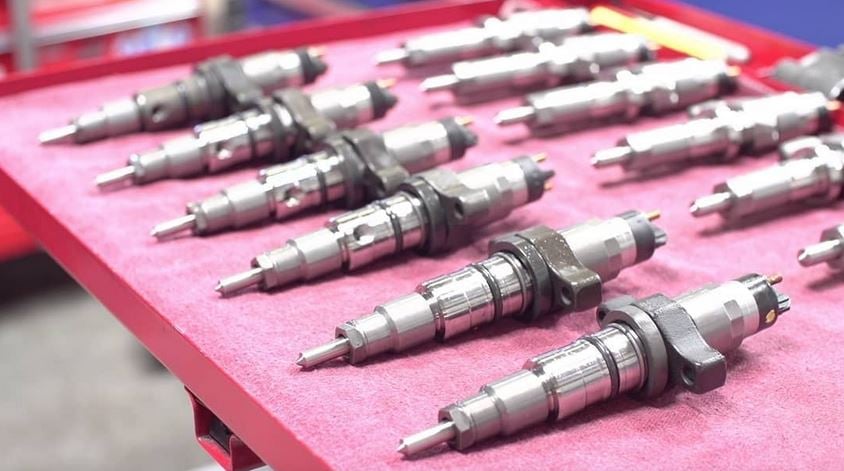
I’ve read the injectors on the Duramax (2017) have you be coded. What does that mean?